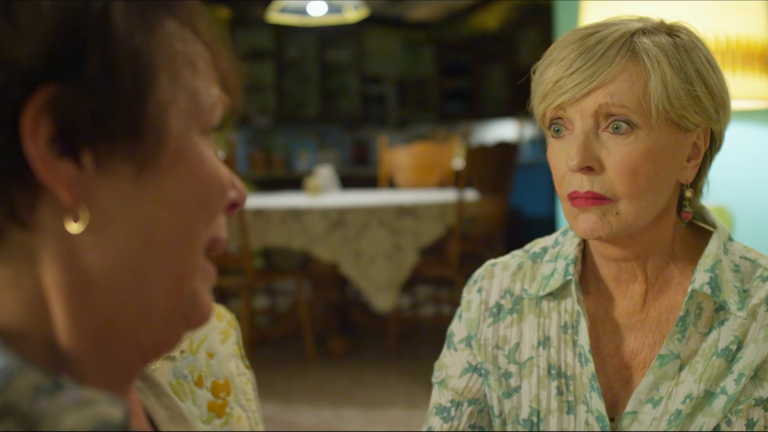Las Vegas exists in a perpetual state of performance, a city that transforms reality into spectacle with every neon flash and spinning wheel. It’s no coincidence that cinema, the art of manufactured dreams, has found its perfect setting in this desert oasis of ambition and excess. From Martin Scorsese’s brutal “Casino” to Denis Villeneuve’s futuristic “Blade Runner 2049,” Las Vegas has evolved from mere backdrop to become cinema’s most compelling character—one that embodies both the intoxicating allure and devastating consequences of the American Dream.
The Birth of Vegas Noir
The cinematic relationship with Las Vegas began in earnest during the 1960s, but it was the 1970s that established the city’s dark mythological status. Films like “Diamonds Are Forever” introduced audiences to Vegas as a playground for the wealthy and dangerous, where James Bond could navigate through glittering casinos while deadly plots unfolded beneath the surface glamour. This early cinematic portrayal established a crucial visual language: Vegas as a place where surface beauty masked underlying corruption, where neon lights created shadows deep enough to hide society’s most dangerous secrets.
The visual grammar of Vegas noir relies heavily on contrast—the blazing lights against the encompassing desert darkness, the opulent interiors juxtaposed with seedy back rooms, the promise of instant wealth shadowed by the reality of inevitable loss. Cinematographers learned to use the city’s natural theatricality, turning casino floors into stages where human drama played out against a backdrop of perpetual artificial day.
Scorsese’s Casino: The Definitive Vegas Nightmare
Martin Scorsese’s 1995 masterpiece “Casino” remains the gold standard for Las Vegas cinema, not merely because of its narrative power but because of how it captures the city’s essential duality. The film presents Vegas during its mob-controlled golden age, when the city operated as America’s most successful criminal enterprise disguised as entertainment.
Scorsese’s visual approach treats the casino floor as both temple and slaughterhouse. The camera glides through the Tangiers casino with religious reverence, capturing the ritualistic nature of gambling while simultaneously revealing the mechanical precision with which the house extracts wealth from its patrons. The neon lighting becomes a character itself—seductive and hypnotic, but also harsh and revealing, exposing the desperation in players’ eyes and the cold calculation of the operators.
The film’s genius lies in its understanding that Vegas casinos are theaters of human psychology. Every architectural element, from the absence of clocks to the maze-like layouts, serves the house’s psychological warfare against its customers. Scorsese captures this manipulation through his camera work, using long tracking shots that mirror the disorienting experience of wandering through a casino, losing track of time and money simultaneously.
The Digital Evolution of the Casino Experience
The transformation of gambling from physical to digital spaces has created new narrative possibilities for filmmakers. The psychology that once required the physical presence of slot machines and card tables can now be replicated through screens and algorithms. This evolution reflects broader changes in how we engage with risk and reward in the digital age.
Modern online platforms have democratized the high-stakes experience once reserved for Vegas’s most exclusive establishments. Today’s high-roller casino players can access sophisticated gaming environments from anywhere, complete with live dealers and immersive graphics that rival the sensory overload of traditional casino floors. This shift has influenced how contemporary filmmakers approach gambling narratives, recognizing that the essential human drama—the tension between hope and loss, control and chaos—transcends physical location.
The digital casino environment has also introduced new visual metaphors for filmmakers. The clean, minimalist interfaces of online gaming platforms create a different kind of aesthetic tension than traditional neon-soaked casino floors. Where Vegas noir relied on the contrast between light and shadow, digital gambling narratives explore the tension between the virtual and the real, between algorithmic precision and human unpredictability.
Blade Runner 2049 and the Future of Neon Cities
Denis Villeneuve’s “Blade Runner 2049” represents the evolutionary endpoint of Vegas cinema, transforming the city into a post-apocalyptic wasteland while preserving its essential character as a monument to artificial dreams. In the film’s vision of 2049, Las Vegas has been abandoned to radiation and dust storms, yet its neon signs continue to flicker—ghosts of electric ambition refusing to die.
The film’s Vegas sequence is perhaps cinema’s most haunting meditation on the city’s meaning. The abandoned casinos become archaeological sites of American excess, their darkened slot machines and empty stages serving as tombstones for the dreams that once powered the city. Yet even in decay, Vegas maintains its seductive power. The holographic Elvis performing for an audience of dust and radiation embodies the city’s eternal promise: that the show will go on, regardless of consequence.
Villeneuve’s visual approach strips away the warm golds and reds traditionally associated with Vegas, replacing them with cool blues and stark whites. This color palette transformation reflects the city’s evolution from a place of human desires to a monument to artificial intelligence and digital consciousness. The neon becomes less about human attraction and more about the persistence of programmed behaviors—machines continuing to perform their functions long after their audiences have disappeared.
The Visual Language of Artificial Paradise
What unites all great Vegas cinema is an understanding of the city’s fundamental artificiality. Unlike other cinematic cities that developed organically, Las Vegas was consciously designed as a stage set for human drama. This theatrical quality makes it the perfect setting for films exploring themes of performance, identity, and the thin line between reality and simulation.
The visual language of Vegas cinema relies on several key elements: the hypnotic quality of repetitive patterns (spinning wheels, flashing lights, cascading coins), the disorienting effect of constant artificial illumination, and the psychological impact of spaces designed to manipulate human behavior. Filmmakers have learned to use these elements not just as background but as active participants in their narratives.
Dreams, Nightmares, and Electric Sheep
Las Vegas in cinema serves as America’s most honest mirror—a place where the nation’s foundational myths about opportunity, transformation, and the pursuit of happiness are tested against harsh mathematical realities. The city’s casinos promise instant transformation through luck and risk, embodying the American Dream’s most seductive and dangerous aspects.
In the end, Vegas cinema reveals that the city’s greatest trick isn’t making money disappear—it’s making us believe in magic while showing us exactly how the illusion works. The neon lights don’t hide the machinery; they illuminate it, turning the mechanics of desire into spectacle. That’s what makes Las Vegas cinema’s ultimate character: a city that performs honesty about its own dishonesty, a place where artifice becomes authentic through the sheer audacity of its performance.
From “Casino’s” brutal realism to “Blade Runner 2049’s” speculative poetry, Las Vegas continues to evolve as cinema’s most versatile and revealing setting—a neon-lit stage where America’s dreams and nightmares play out in endless, electric repetition.






